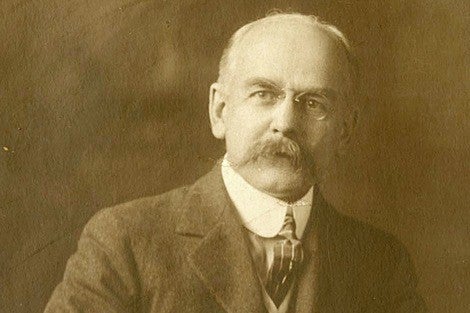The year was 1912. Just one year after being “called to Harvard,” George C. Whipple—newly-appointed Gordon McKay Professor of Sanitary Engineering—was charged with the task of devising a plan for a health officers program in collaboration with M.I.T.
Described by his contemporary Charles-Edward Winslow as “a loveable little man, full of interest in the small affairs of daily life,” Whipple was a protégé of the eminent William T. Sedgwick, whom—along with Harvard Medical School Professor Milton J. Rosenau—he enlisted in the mission of launching what was first known as the Harvard-M.I.T. School for Health Officers.
While best known for his role in founding what became Harvard School for Public Health, Whipple also published some of the most important books in the early history of public health and applied microbiology. His particular focus was water supplies, and his seminal work The Microscopy of Drinking Water remained in use at least half a century after its 1899 publication. Before arriving at Harvard, he gained renown for his work organizing and directing water laboratories at Chestnut Hill in Boston and in Brooklyn.
During his time at Harvard, Whipple also oversaw sanitary inspection of university dining halls, according to a January 13, 1917 article in the Harvard Crimson. “Only luck [sic] of funds limits the extension of careful sanitary examination to all of the places where the students eat,” reported the paper—which elsewhere (and inexplicably) asserted that during the Harvard-M.I.T. collaboration, Harvard’s Gordon McKay professor “was also Professor of Squatter Engineering at the Institute.”
Is there an event, person, or discovery in Harvard School of Public Health history that you’d like to read about? Send your suggestions to centennial@hsph.harvard.edu.
